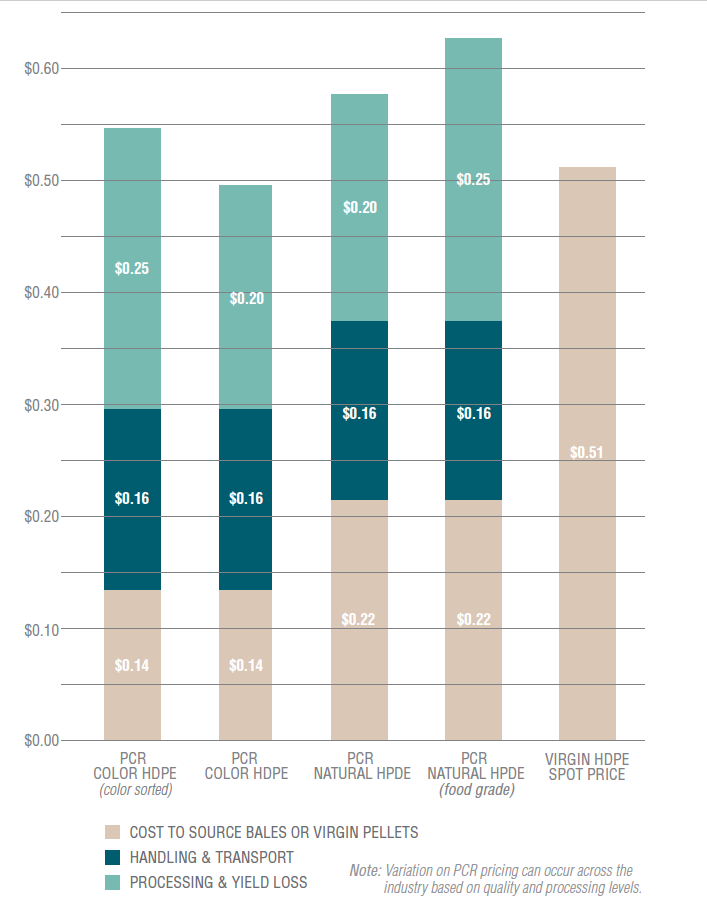Historically, companies have used post-consumer resin (PCR) because it was a lower cost feedstock than virgin. In recent years, however, pricing for virgin plastic (mostly “wide spec” resin) has fallen below that of PCR (mostly high quality PCR that is suitable for food contact).
Developing PCR that can compete with virgin resin, in terms of performance or consistency in specifications, requires significant cost in handling and processing. The breakdown of those recycling costs for two common types of recycled plastic – color and natural HDPE – are shown in the bar graph.
It’s important to remember resin costs generally do not account for the environmental benefits from the use of PCR or the impacts of using virgin. For PCR to become a more attractive option, drivers beyond price will need to be taken into account by resin purchasers.

Data Sort is produced each quarter by More Recycling. For additional information, go to morerecycling.com.
This article originally appeared in the Spring 2019 issue of Plastics Recycling Update. Subscribe today for access to all print content.

